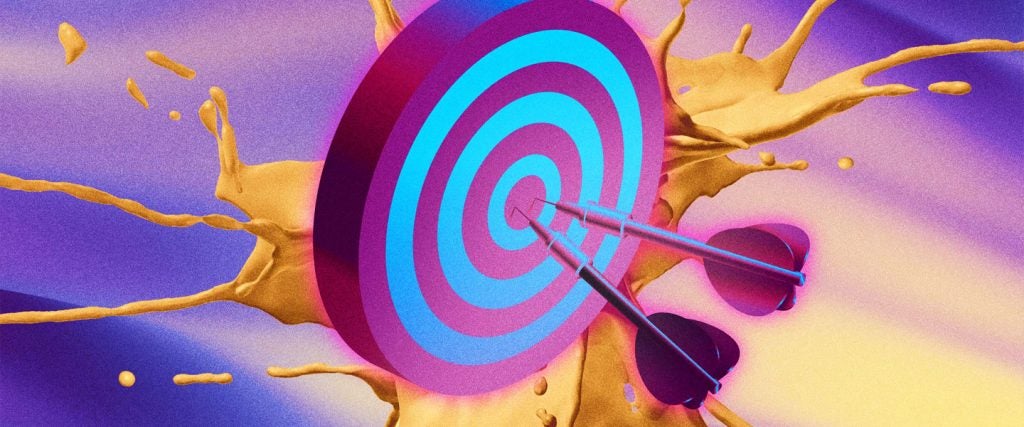Despite the fact that sex is a basic instinct and a near-universal experience, we know remarkably little about it. And so, this week, we’re teaming up with our friends at Futurism, oracles of all things science, technology and medicine, to look at the past, present and future of pleasure from a completely scientific perspective.
The average penis is like a Civil War cannon: It shoots, then requires reloading, a process that takes time. But 36-year-old Max (who asked that we change his name) has been blessed with an extraordinary weenie. On special occasions, it fires like a semi-automatic pistol, hurling two consecutive cum wads at astonishing speeds. “It shouldn’t be possible,” he says, “but the universe has smiled upon me.”
Indeed, Max is one of few people who’ve encountered the storied double nut. While he’s not unrivaled — a 1998 case report highlights a man who came six times and never went soft in 36 minutes — fewer than seven percent of guys over 30 report having experienced multiple orgasms (that number goes up to 10 percent for dudes in their 20s).
It would seem that a double nut requires circumventing the refractory period, a post-cum recovery phase during which ejaculating again is virtually impossible. So, how do Max and others manage such a feat?
Lamentably, it’s one of life’s greatest mysteries. “We don’t exactly understand what mediates the refractory period,” says neuroscientist Nan Wise, author of Why Good Sex Matters: Understanding the Neuroscience of Pleasure for a Smarter, Happier and More Purpose-Filled Life.
However, age is certainly a factor. According to the International Society for Sexual Medicine, “Younger men may need only a few minutes of recovery time, but older men usually have a longer refractory period, sometimes between 12 to 24 hours.” Put simply, the older you get, the longer you have to wait between spurts. (If you’re suffering from age-related ejaculatory problems, here’s our guide to dealing with it.)
More in the realm of your control, Wise says heightened stimulation seems to speed up the refractory period, too. She points to the so-called Coolidge effect, a biological phenomenon where animals express a renewed sexual desire whenever they’re introduced to a brand-new mate. This occurrence is linked to an increase in dopamine levels, which can impact the refractory period — low levels make it harder to get hard. In a 1997 study of the Coolidge effect, male rats saw an insignificant increase in dopamine when introduced to an old bang buddy, compared to a substantial increase when fornicating with a new one.
Even more interesting, several studies in the 2000s found that certain species allocate sperm depending on the sexual encounter as a direct result of the Coolidge effect. For example, a 2003 report found that male fowl dispense less semen while banging a familiar partner so they can present a larger load to new mates. In theory, this serves an evolutionary purpose: Because a single female can only have so many babies at once, saving a bigger nut for a different mate results in more offspring.
None of this means you need to be polyamorous to produce multiple consecutive creams. It’s just that, as Wise says, “The context people are in has a lot of effect on their chemistry.” To that end, more excitable sexual experiences have a higher likelihood of resulting in numerous orgasms, which may explain why Max only fires twice when he’s in the missionary position, one of the more intimate arrangements.
If you’re really hankering for a double nut, a 2000 study found that Viagra and Cialis can shorten the refractory period by about 10 minutes (but other studies have seen mixed results). The reason for that is simply because they help you stay erect during the refractory period.
Lastly, exercises like kegels, which strengthen the pelvic floor muscles, appear to give a person more ejaculatory control, which could be employed to cum like a machine gun. The subject of a 1989 case review, a 30-year-old man, “acquired multiorgasmic capacity a year prior to the study after learning how to deliberately manipulate the striated pubococcygeus [PC] muscles used to stop ejaculation.”
While the average volume of ejaculate is between three and five milliliters, the guy produced multiple loads of less than one milliliter, suggesting that he was able to divvy up his cum. (If that sounds nice, check out our manuals involving kegels and multiple orgasms.)
In short, while we still have a ways to go before truly understanding the double nut, Wise says it’s more likely to happen under three conditions: (1) if you’re young; (2) if you’re profoundly aroused; and (3) if you’re “very lucky.”
A truly humble nutter, Max certainly considers both himself and his partner to be lucky. Of his ability to cum twice, he says, “It’s a fun surprise for both of us.”

